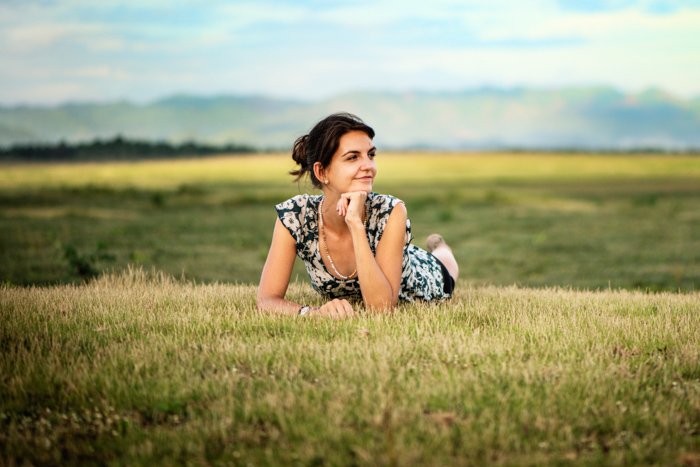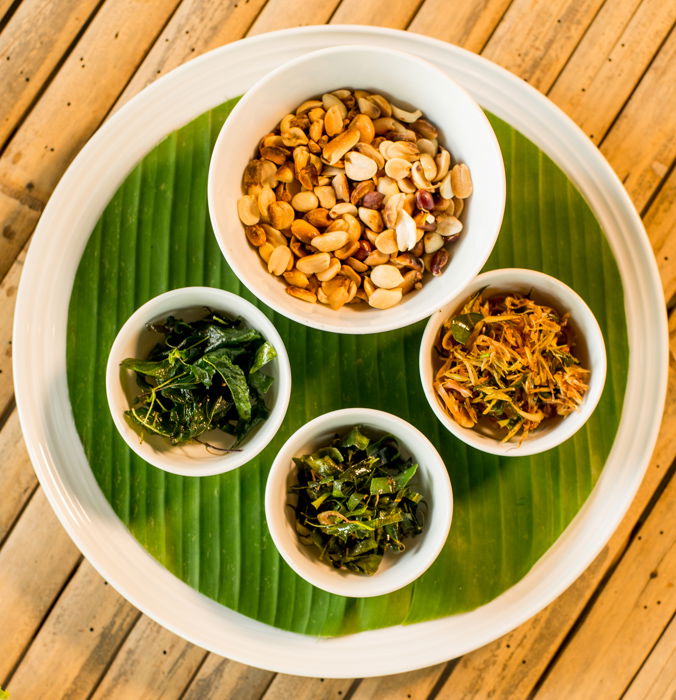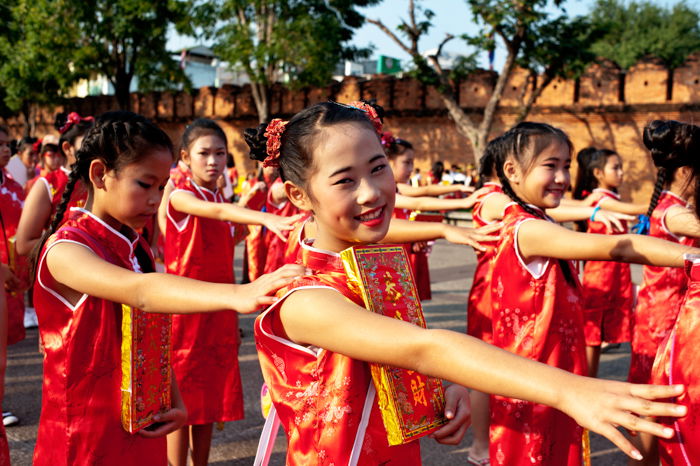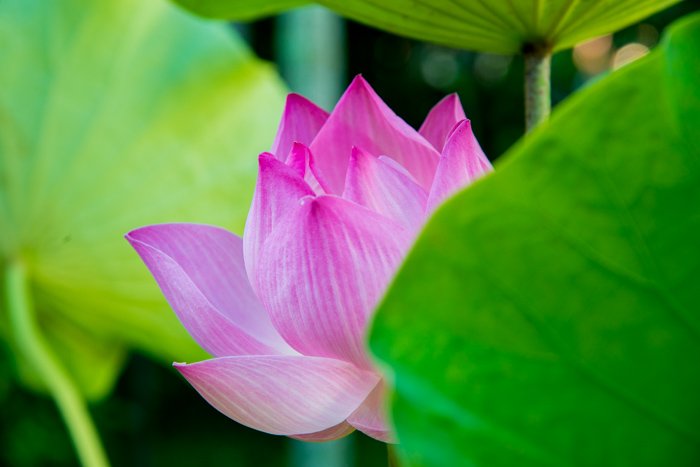Many beginner photographers use a central composition. But once you learn the rules of composition, you will discover there are better ways to compose your photos.
Some experienced photographers are turned off by the thought of using central composition. But there’s no need to be afraid of it. In fact, you can use it to improve your photos. Continue reading to learn how!

How to Use Central Composition in Photography
Below are our top tips for using a central composition to take your photos to the next level!
1. A Central Composition Creates Symmetry
In Architecture Photography
Architects and designers often use symmetry in their construction and layouts. It makes sense to embrace a central composition when photographing architecture. Using the rule of thirds might not produce the most compelling composition for this particular shot.
Look to see where there is balance. Find a vantage point that gives you an even balance of symmetrical structure. Line the center of your viewfinder up with the central line of the structure. Check to see if most of what’s on the left and right sides of your frame are the same.
Bell-shaped chedi at Buddhist temples often are best photographed using central composition. This one at Wat Pa Dara Phirom near Chiang Mai, Thailand, is an interesting example. Raised off the ground by a square-shaped lower floor, the round chedi stands out against the clear blue sky.
If I had used the rule of thirds, I would have had to crop the structure. Or I would have had to include other surrounding elements in my frame. A central composition made the architecture stand out.

In Portrait Photography
Aside from very minute details, faces are more or less symmetrical. A tight crop on a face will be interesting if you use a central composition to create a balanced frame.
Position the central line of your viewfinder between the subject’s eyes. Hold your camera so this vertical line continues down through the middle of the nose and mouth. Both sides of the face will be balanced as long as your subject is facing your lens.
If you are a little to one side or the other or your subject’s face is turned, the results won’t be symmetrical. Pay careful attention to the center line and the edges of your frame.
Check that what’s on the left side matches what’s on the right side. If your camera has the option to display a grid in the viewfinder, use it. It will help you be more precise.

2. Evoke Feelings in Your Photos
A satisfying photography composition usually conveys some kind of feeling. A central composition can often help express feelings of peace or power.
Peace is often associated with balance. When things are in harmony, it makes us feel relaxed. Don’t be scared to use central composition to incorporate tranquility in your photographs.
The photo below is of my friend lying on the grass in a very peaceful scene. I wanted to enhance this by breaking the rules of composition because I thought it would create feelings within the viewer.
I split my frame approximately into thirds horizontally. But I placed her in the vertical center of my frame.
There was an even amount of space on either side, as well as above and below. This gives a sense of peaceful confidence that reflects her expression.
Try placing the dominant eye on the vertical center of the frame. This shows power and confidence. The subject’s gaze will follow you no matter how you look at the photo.

3. Try a Square Frame to Highlight Symmetry
Using a square aspect ratio is great for central compositions. Squares are all about symmetry and balance. You can make creative photos using this composition technique when the elements are right.
Break the rules of composition by centering your subject in a square frame. You don’t always have to place your subject using the rule of thirds. I will often crop to a square in post-production.
In the photo below, I initially photographed the cow as a vertical composition. I did like the expanse of sky above the cow. It helps convey the huge open field it was walking in. But I prefer it square because of the symmetry created by cropping it. The strong horizontal lines in this photo balance the cow’s central composition.

4. Simplify Your Photography Composition
It has been said that simplicity is the essence of all good design. Central composition is about as simple as you can make it. That is why most new photographers use it without even thinking about it.
Our vision isn’t bound by a frame’s edges and corners the same way photos are. This simplifies what we see in a photograph compared to how we see real life. Placing your subject in the frame’s center often amplifies the frame’s edges.
In the photo below, the simplicity of the centrally placed round plate is pleasing. The four round bowls and the green banana leaf are all harmonious. The diagonal lines of the bamboo table add a little contrast to all the circles. Even though it’s not completely symmetrical, it is central and very simple.

5. Central Composition Will Draw Attention to Your Subject
Placing your subject in the center of your frame will help draw attention to them. If you’re shooting a minimalist composition, this isn’t so important.
The need for central composition becomes more evident when you have a lot going on in the frame. This is especially true when there are many similar elements within the frame.
In the photo below, the girls were lining up and preparing to take part in a Chinese New Year parade. It is a very busy scene that works only because I focused on one girl. By placing her in the center of my frame, I make it clear she is my main subject.
Had I framed her more towards one side of the frame, the composition wouldn’t have been so effective. It wouldn’t have been so engaging if I had composed the photo without a clear center of attention.
Picking one main subject from a group like this will often make a more interesting photograph. Try to narrow in on a single person or element. Make it more prominent in your composition by placing it in the middle of your frame.

6. Create a Sense of Depth
We see the world in three dimensions, yet photos are flat and two-dimensional. To create effective, strong photographs, it helps to add a sense of depth. Central composition can help achieve this.
There are various other photographic techniques and methods which can also add a sense of perspective to an image. Some of these are figure-to-ground, controlling your depth of field, your choice of lens, and the placement of other elements within the frame.
Balancing the space around the main subject of your photo creates depth. Having a main subject in the center of the photo comes quite naturally to us. This makes it easier for our minds to perceive depth.
A central composition can also add perspective. Having other elements in the frame can help support your main subject and enhance depth.
In the photo below, the center of the lotus flower is central to my composition. The leaf in the foreground on the right adds to the depth perception. The leaf in the background helps create a sense of perspective. Composing the flower more to the left or right of my frame would have minimized the sense of depth.

7. Combine Compositional Elements to Form a Whole
With any photo, there are multiple factors that must come together to make it stand out. Good composition is rarely the result of one method, setting, or technique. Aristotle meant this when he said, “The whole is greater than the sum of its parts.”
For the photos used in this article, central composition is one technique. But I combined it with other composition rules and photography methods. You need to experiment with the rules and try applying different ones.
In the photo below, the shallow depth of field strengthens the photo of the Thai model. But it also uses leading lines as a composition technique. Combined, these two composition techniques make this a much better photo.

Conclusion: How to Use Central Composition in Your Photos
For as common as the rule of thirds is, you’d think putting your subject in the center wouldn’t make a good photo. But for many shooting situations, that’s simply not the case.
As you learn the rules and practice creating a central composition, leave a little more room around your subject. Having more room around a central subject allows you to try different crops. You will be able to compare and decide which you prefer and why.
Check out our Intuitive Composition eBook for everything you need to know about how to take your photography to the next level!

